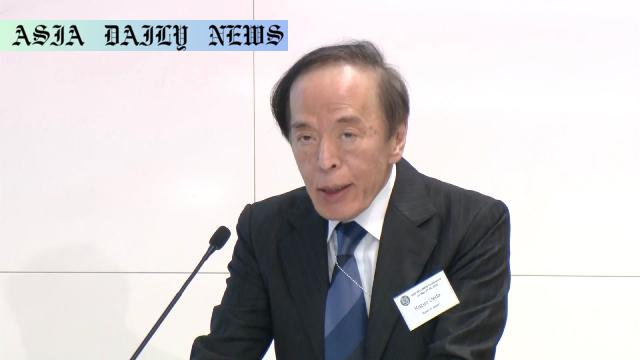Rate Hike: BOJ chief highlights cautious approach amid uncertainty caused by rising inflation, trade policies, and global pressures.
- Rate Hike: BOJ Governor Ueda suggests a careful stance on further rate hikes amidst growing inflation concerns.
- Higher food prices, particularly rice, and trade policy uncertainties are influencing the BOJ’s economic planning.
- BOJ remains open to adjustments if data show improving economic activity and price stability.

Understanding BOJ’s Approach to Monetary Policy Amid Uncertainty
The Bank of Japan (BOJ), under the leadership of Governor Ueda Kazuo, has taken a cautious yet strategic approach in navigating Japan’s economic uncertainties. At a recent international conference held in Tokyo with attendance from central bankers worldwide, Ueda reiterated the BOJ’s commitment to closely evaluating the need for a potential rate hike. His statements reflect a focus on balancing economic stability while addressing inflationary pressures.
According to Ueda, inflation in Japan has seen an uptick largely driven by surging food prices, with rice being a significant contributor. This inflationary surge is a key factor urging the BOJ to reconsider the extent of its monetary easing policies. While maintaining historically low interest rates has helped support Japan’s economic recovery post-pandemic, the central bank now faces the challenge of deciding if these measures need recalibration.
Global and Domestic Factors Influencing BOJ’s Decisions
Beyond domestic inflation, Ueda pointed to growing uncertainties in global trade policies as a critical influence on economic conditions. Although no country was explicitly named, the reference to U.S. tariff measures was clear. Since global trade dynamics have profound implications for export-dependent economies like Japan, assessing these impacts is vital for the BOJ’s monetary policy decisions.
What makes the situation even more complex is the unpredictability of Japan’s future economic trajectory. While some signs show improving price levels and economic activity, there remains a wide margin of uncertainty regarding whether these improvements will sustain long enough to warrant a rate hike. Ueda’s remarks emphasized maintaining an open and analytical outlook, free from preconceived conclusions, to ensure any policy shifts are based on solid economic data.
Potential Adjustments and Economic Outlook
The BOJ chief’s commitment to being data-driven highlights a broader theme in modern central banking: balancing intervention while minimizing disruption. Ueda affirmed that the central bank would review inflation dynamics and labor market conditions to ensure that any policy changes align with long-term objectives. This includes safeguarding financial stability and fostering sustainable growth amidst challenges.
Stakeholders across industries are closely observing the BOJ’s moves, especially given Japan’s standing as a major global economy. While higher interest rates typically discourage borrowing and curb inflation, they also risk slowing down economic activity. Striking this balance is pivotal for Japan’s economic health and its position on the global stage.



Commentary
The BOJ’s Calculated Stance on Monetary Policy
The Bank of Japan’s cautious approach to potential rate hikes signifies its commitment to striking a delicate balance in an increasingly uncertain global economy. Governor Ueda’s statements underscore the complexity of economic policymaking, particularly in the current turbulent climate. Inflationary pressures, fueled by rising food costs, present a serious challenge. At the same time, global trade developments, including US tariffs, add layers of uncertainty that make swift or aggressive monetary policy adjustments risky.
Personally, I admire the BOJ’s commitment to remaining data-driven and free from preconceptions when formulating policy. In a world where hasty decisions can lead to long-term economic repercussions, this measured approach is prudent. It also reflects a broader trend among central banks, which are prioritizing economic stability over short-term gains during turbulent times. The focus on incremental and cautious adjustments may pave the way for sustainable growth without introducing unnecessary risks.
Economic Stability Amid Inflation and Trade Dynamics
Nonetheless, the challenges for the BOJ are immense. High inflation erodes consumers’ purchasing power, a particularly sensitive issue in Japan given its aging population and relatively low economic growth rate. On the other hand, the uncertainty surrounding global trade policies threatens Japan’s export-reliant economy. These intertwined challenges demand a nuanced and flexible monetary policy strategy.
Moving forward, it will be fascinating to see how the BOJ navigates these waters. Will they proceed with a rate hike, or will data signal a need to maintain current policies? Regardless of the direction, the central bank’s decisions are likely to have ripple effects far beyond Japan, influencing markets and policy debates worldwide.